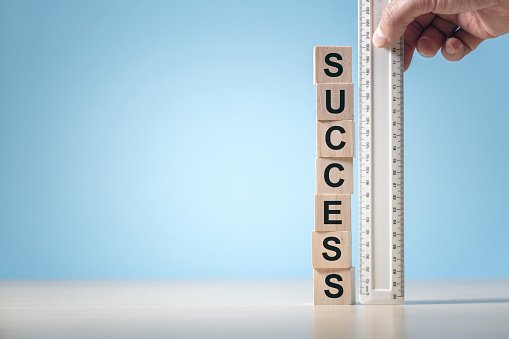Introduction
Challenges and mistakes are part of life. No one gets everything right the first time, and that’s okay. The problem isn’t failing—it’s letting failure stop you.
The most successful people aren’t the ones who avoid mistakes; they’re the ones who learn from them.
Think about Thomas Edison. He didn’t invent the lightbulb on his first try. He made thousands of attempts before finding the right solution.
When asked about his failures, he reportedly said, “I have not failed. I’ve just found 10,000 ways that won’t work.” That mindset—seeing failure as a lesson rather than a defeat—is what leads to growth.
I want to break down how to shift your perspective on challenges, turn mistakes into valuable lessons, and develop the resilience to keep going when things don’t go as planned.
Why Challenges are a Good Thing?
It’s easy to think of challenges as roadblocks, but they’re stepping stones. Every difficulty you face teaches you something new and makes you stronger.
Challenges Build Resilience
Resilience is the ability to bounce back after setbacks. Studies show that people who embrace challenges and push through difficulties develop mental strength.
A study published in The Journal of Personality and Social Psychology found that people who experience moderate levels of adversity tend to be more resilient and better at handling future stress.
Challenges Force Growth
Growth doesn’t happen in comfort zones. Think about the first time you tried to ride a bike. It probably felt impossible. But after a few falls, you learned to balance. That same principle applies to life. When you struggle, you grow.
Challenges Improve Problem-Solving Skills
Facing obstacles forces you to think differently. It pushes you to find creative solutions. That’s why so many great inventions and discoveries come from failure.
How Do I Change My Mindset About Mistakes?
Mistakes feel bad. No one likes messing up. But shifting how you see them can change everything.
Reframe Failure as Learning
Instead of thinking, “I failed,” try thinking, “I learned.” Mistakes show you what doesn’t work, which brings you closer to what does.
For example, Sara Blakely, the billionaire founder of Spanx, grew up in a household where failure was encouraged.
Her father would ask her every week, “What did you fail at this week?” If she didn’t have an answer, he’d be disappointed. That mindset helped her embrace risk and build a billion-dollar business.
Separate Yourself from Your Mistakes
Failing at something doesn’t make you a failure. Everyone makes mistakes. The key is to not let them define you.
Use the “Yet” Technique
If you catch yourself saying, “I can’t do this,” add the word “yet.”
- “I don’t understand this… yet.”
- “I’m not good at public speaking… yet.”
That simple shift reminds you that improvement is always possible.
How Do I Learn from Mistakes?
It’s not enough to just accept mistakes—you have to learn from them.
Step 1: Acknowledge the Mistake
Ignoring mistakes doesn’t make them disappear. Own up to them. This isn’t about self-blame; it’s about recognizing what happened so you can improve.
Step 2: Analyze What Went Wrong
Ask yourself:
- What led to this mistake?
- What could I have done differently?
- What lesson can I take from this?
Writing it down can help you process it better.
Step 3: Apply the Lesson
Mistakes aren’t useful if you keep repeating them. The key is to take what you’ve learned and apply it moving forward.
For example, if you bombed a presentation at work because you didn’t prepare enough, the lesson isn’t “I’m bad at public speaking.” The lesson is “I need to practice more next time.”
4. Developing a Growth Mindset
Psychologist Carol Dweck introduced the concept of growth mindset vs. fixed mindset.
- A fixed mindset believes abilities are set in stone. “I’m just not good at this.”
- A growth mindset believes abilities can be developed. “I can get better with practice.”
People with a growth mindset are more likely to succeed because they see challenges as opportunities to improve.
How to Develop a Growth Mindset
- Embrace Challenges: See them as opportunities, not threats.
- Replace Negative Self-Talk: Instead of “I can’t do this,” say “I’m learning how to do this.”
- Celebrate Effort, Not Just Success: Praise yourself for trying, not just for getting it right.
Real-Life Examples of Turning Mistakes into Success
Oprah Winfrey
She was fired from her first television job. Instead of quitting, she used it as motivation and went on to become one of the most successful talk show hosts of all time.
Steve Jobs
He was kicked out of Apple, the company he founded. But instead of giving up, he started new projects, gained fresh insights, and eventually returned to Apple to lead it to even greater success.
Michael Jordan
He was cut from his high school basketball team. Instead of letting that define him, he practiced harder and became one of the greatest athletes in history.
The common thread? They didn’t let failure stop them. They learned, adapted, and kept going.
FAQs
What if I keep making the same mistake?
If a mistake keeps happening, take a deeper look at what’s causing it. Are there habits or patterns you need to change? Sometimes, small adjustments can make a big difference.
How do I stop being afraid of failure?
Shift your perspective. Instead of seeing failure as something to fear, see it as part of the learning process. The more you practice failing forward, the less scary it becomes.
What if people judge me for my mistakes?
People are usually too focused on their problems to dwell on yours. And if someone does judge you, that’s a reflection of them, not you. The most successful people in the world have all failed at some point.
Further Resources
- Carol Dweck’s Book Mindset – A deep dive into the power of a growth mindset.
- Harvard Business Review on Learning from Failure – Insights on how businesses and individuals can embrace failure.
- TED Talk: The Power of Failure – A great talk on why failure is essential for success.
Conclusion
Mistakes and challenges aren’t the enemy. They’re opportunities in disguise. The people who achieve the most aren’t the ones who never fail—they’re the ones who keep going, learning, and improving.
So, the next time you face a setback, ask yourself: What can I learn from this?





GIPHY App Key not set. Please check settings